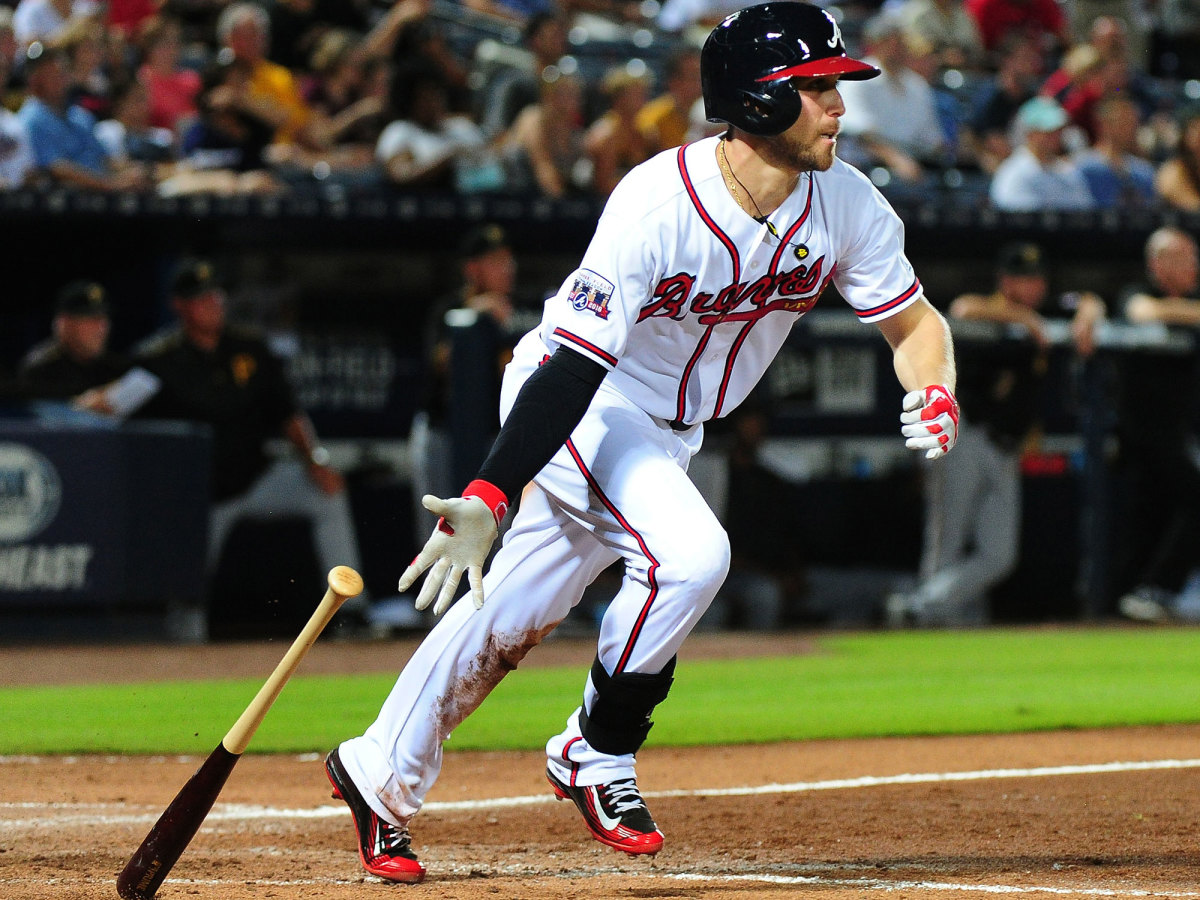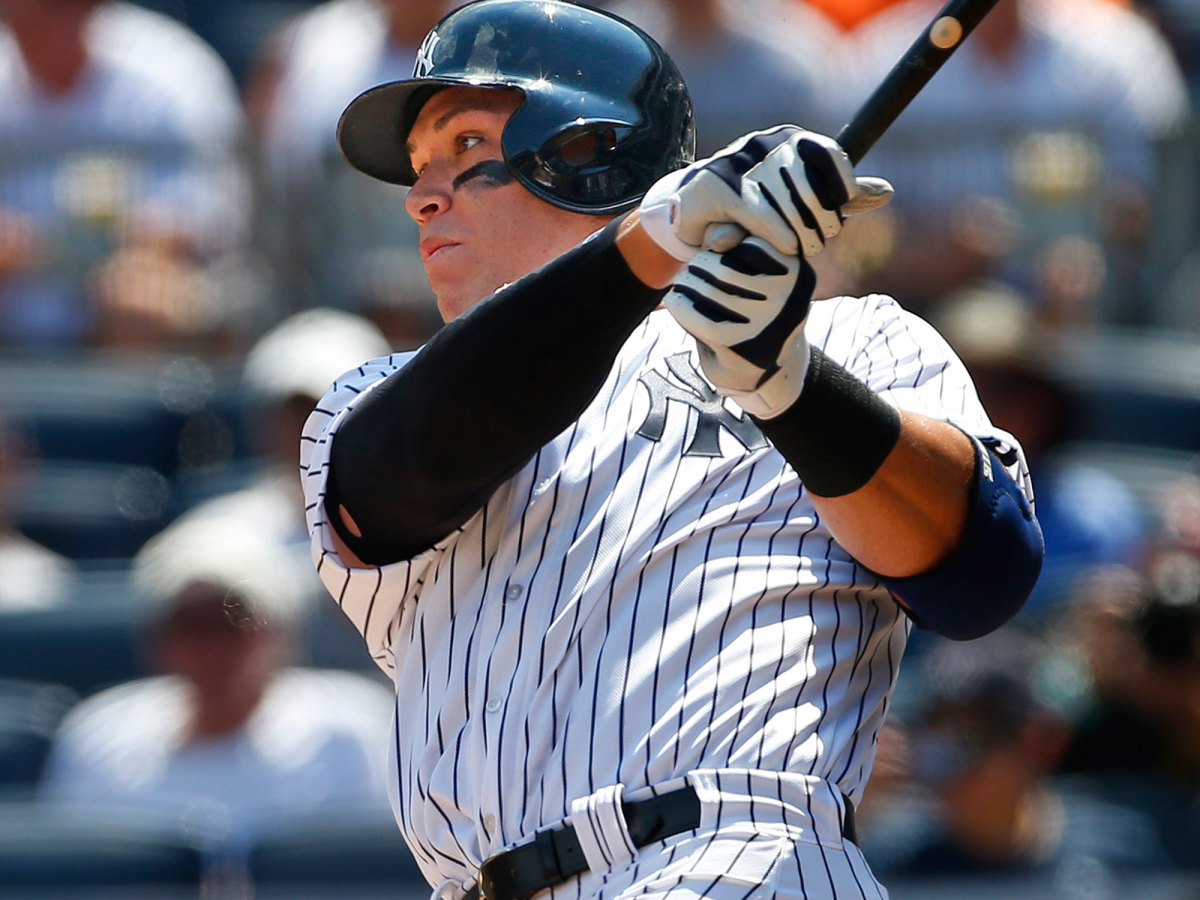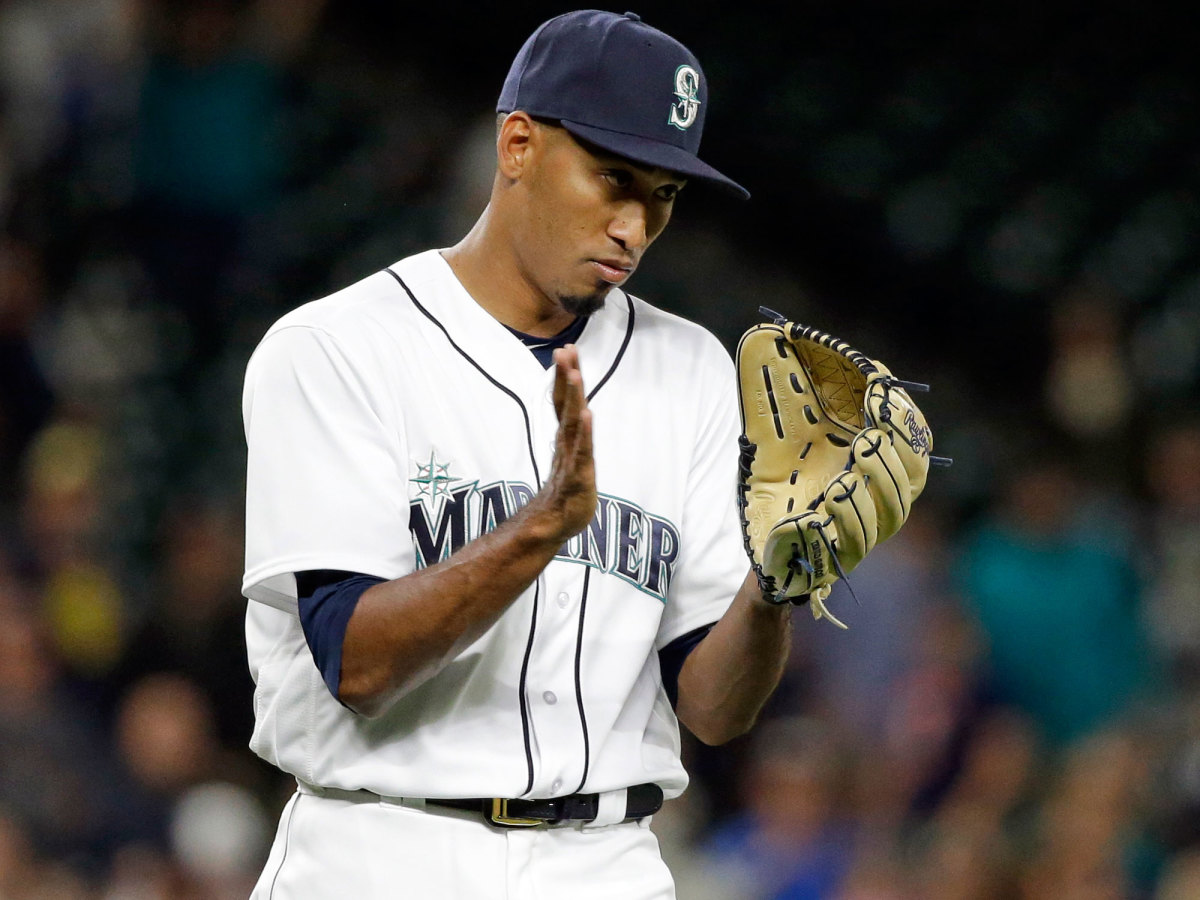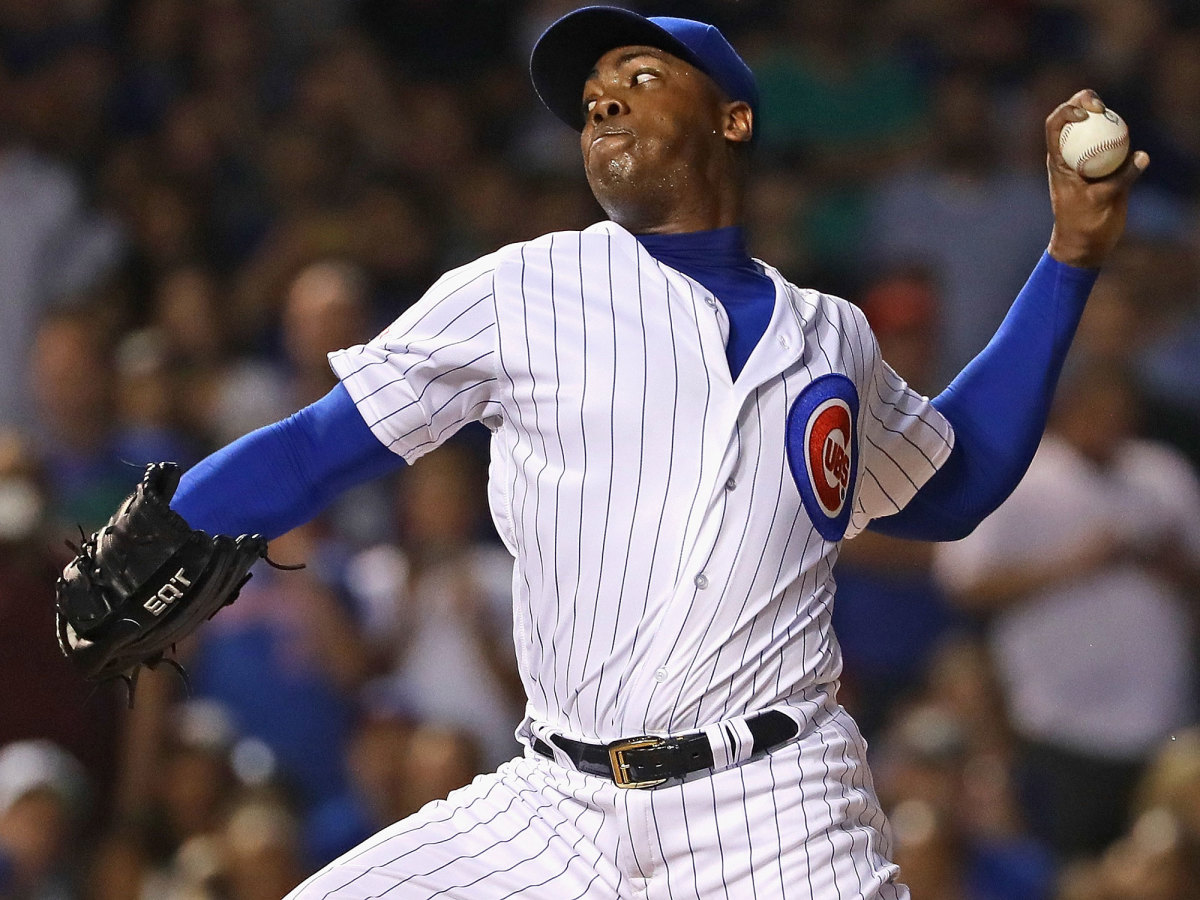The 30: Four teams going streaking in this week's power rankings

The concept of momentum in baseball is fraught with counterexamples. Plenty of teams have entered the postseason scorching hot only to flame out quickly. Plenty of teams have backed into the playoffs only to go on to win the World Series. Generating big winning streaks (or big losing streaks) late in the season guarantees nothing.
Still, we can often learn something about a team’s potential based on what happens during a hot stretch. This week, we look at four teams playing their best baseball of the season, and what the implications of those hot streaks might be for both the rest of the year and for the more distant future.
The Braves will almost certainly finish last this season, but their recent success offered a glimpse of future optimism. The Yankees are heating up even as they shift toward a youth movement. The Mariners have muscled their way back into the wild-card race. Meanwhile, the Cubs built one of their longest winning streaks in recent franchise history, underscoring the value of roster depth.
Let’s go streaking. It’s Week 19 of The 30.
Best Final Gesture Before Retirement: Prince Fielder
Prince Fielder is done playing baseball, and that’s a damn shame.
The barrel-chested slugger was a great player, of course. In 12 seasons, he made six All-Star teams, finished in the top 10 of MVP voting four times, won three Silver Slugger awards and batted .283/.382/.506 with 319 career home runs (the exact same total as his father Cecil).
But what made Fielder unforgettable was the joie de vivre he showed on the field. My single favorite sports celebration remains what Fielder did after his walk-off home run to beat the Giants on Sept. 6, 2009. Nearing home plate at the end of his trot, Fielder leapt in the air, and when he landed with a boom on home plate, all of his teammates toppling the ground like bowling pins. It was a celebration the Brewers had planned for weeks. It also annoyed the far-too-sensitive Giants so much, they threw at Fielder the next time they faced him—the following year, in spring training. It was still objectively spectacular.
Fielder had one more gift to offer us before heading off to retirement. As he approached the podium on Wednesday with all his teammates in attendance, he reached out and touched Adrian Beltre’s head. As the last gesture of an incredibly accomplished, fun-filled career, you really can’t do any better.

Ender’s Game
Braves centerfielder Ender Inciarte is producing again, but how long will he stick around?
30. Atlanta Braves (44–74 record, minus-136 run differential, last week: 30)
29. Arizona Diamondbacks (48–69, minus-128, LW: 29)
27. Minnesota Twins (47–71, minus-89, LW: 26)
26. Cincinnati Reds (48–68, minus-122, LW: 28)
26. Tampa Bay Rays (47–69, minus-42, LW: 27)
25. Los Angeles Angels (49–68, minus-35, LW: 21)
24. San Diego Padres (50–67, minus-47, LW: 24)
23. Oakland A’s (52–66, minus-96, LW: 25)
22. Milwaukee Brewers (52–64, minus-65, LW: 23)
Last Tuesday, the Braves beat the Brewers for Atlanta’s fourth straight win and sixth in seven games. For the worst team in baseball, that qualifies as a colossal winning streak. That game also snapped an 18-game hitting streak for Ender Inciarte, briefly cooling off the team’s best player over the past month.
The biggest question facing Atlanta is what its roster will look like a year, two years and three-plus years down the road. But will Inciarte be one of the small number of players on the current roster still wearing a Braves uniform at that time?
Loss of Stanton puts Marlins in perilous position as they fight for playoff spot
According to well-connected baseball scribe Jon Heyman, the Yankees were at one point seeking Inciarte (along with hard-throwing righthander Mike Foltynewicz) in exchange for veteran catcher Brian McCann. In a follow-up report, however, Heyman backed off somewhat on the specifics of that proposal, and it was also never reported whether or not the Braves are actually dangling Inciarte in trade talks. Still, a quick glance at Atlanta’s current group of 25 reveals two tiers of players: keepers like Freddie Freeman and Julio Teheran who are young, highly productive, and controllable at below-market rates for many years to come; and nearly everyone else.
Inciarte is one of the few players who falls into the gray area in between. When the Braves fleeced the Diamondbacks in their off-season trade of Shelby Miller, 2015 No. 1 pick Dansby Swanson was (rightly) considered the prize of the deal. What made the trade a true heist, though, were its other parts: Along with Swanson, the Braves landed talented young righthander Aaron Blair and Inciarte.
By Wins Above Replacement (Baseball-Reference.com version), the best player in the trade based on 2015 performance wasn’t Miller; it was Inciarte. His Gold Glove-caliber defense, combined with a (somewhat empty) .303 batting average, made him a five-win player. That hasn't been the case this season: Even with Inciarte hitting nearly .350 with an on-base percentage just below .400 over the past month, he's merely hiked his season line to .268/.327/.341, making him the third-worst hitter among batting title-qualified centerfielders this season. At age 25, with elite defense and team control through 2020, Inciarte becomes a somewhat uncertain asset if he’s going to show as much power as a backup middle infielder from the Dead Ball Era.
This isn’t a decision the Braves need to make today or tomorrow, not when the team is in the midst of a total, painful, potentially long overhaul. But the Inciarte dilemma highlights one of the hidden challenges the Braves face as they try to follow in the footsteps of teams like the Cubs and Astros and successfully pull off a massive turnaround. They’ll need to acquire the right prospects and hope they develop into stars, they’ll need keep the right two or three veterans to lead the way and they’ll need to build the right supporting cast to glue it all together. Whether their current starting centerfielder belongs in that group remains to be seen.

Judge and Jury
The elder statesmen are gone, Aaron Judge is here, and the youth-movement Yankees are suddenly winning games.
21. Philadelphia Phillies (56–63, minus-98, LW: 22)
20. Colorado Rockies (56–62, plus-12, LW: 16)
19. Chicago White Sox (56–61, minus-42, LW: 19)
18. Kansas City Royals (57–60, minus-52, LW: 20)
17. New York Mets (59–58, plus-4, LW: 15)
16. New York Yankees (60–57, minus-30, LW: 18)
15. Pittsburgh Pirates (59–56, plus-1, LW: 17)
When a team sells off its veterans at the trade deadline and opens the door for kids to take over, you’d usually expect the losses to start piling up. The Yankees unloaded three of their best players—Andrew Miller, Aroldis Chapman and Carlos Beltran—before the trade deadline, then later bid a dramatic goodbye to Alex Rodriguez.
But something strange has happened since those moves started: The Yankees have gone 8–5 this month, powered by a four-game winning streak that was snapped on Sunday. They’ve thrust themselves back into the fringes of the wild-card race, and better still, for the first time since the start of the team’s homegrown dynasty in the 1990s, they’re getting fans excited with a bumper crop of dynamic young talent.
Youth movement: On day celebrating past, Yankees’ future arrives with a bang
On Saturday, two members of the kiddie corps made history. Tyler Austin and Aaron Judge both made their major league debuts, batting seventh and eighth against Rays starter Matt Andriese. In his first major league at-bat, Austin knocked a fastball down the rightfield line, scraping over the wall for a home run. Two minutes later, behemoth slugger Judge crushed a changeup to deep center, becoming just the third batter to blast a home run over the batting eye in the new Yankee Stadium.
Even better, the back-to-back homers by Austin and Judge marked the first time in baseball history that teammates had homered in their first major league at-bats in major league history, let alone gone back-to-back. With two other up-and-coming Yankees going deep, Saturday also marked just the third time in the past century four Bombers aged 26 or younger had homered in the same game.
As exciting as Austin’s first game was, Judge is the big story in pinstripes, literally and figuratively. The 24-year-old outfielder clocks in at 6'7" and 255 pounds, making him bigger than Giancarlo Stanton, who until two days ago was considered the gold standard in hulking sluggers. Recently ranked the No. 23 prospect in baseball by experts like ESPN’s Keith Law, Judge can look even more impressive than that when he squares up a pitch: He followed his titanic Saturday blast with another home run on Sunday, prompting a rash of joking-but-not-entirely-joking quips about his prodigious power.
Austin and Judge are hardly alone. On the major league roster, 20-somethings Didi Gregorius, Starlin Castro and others offer varying degrees of upside. Twenty-three-year-old catcher of the future Gary Sanchez came up two weeks ago. On the farm, bigger talents await, led by the fruits of those deadline deals, including teenage infield prospect Gleyber Torres and outfielder Clint Frazier.
If the Yankees do miss the playoffs this season, that would mark the third year out of four that golf season started early, a stretch not seen since before the incredible careers of Derek Jeter, Jorge Posada, Mariano Rivera and Andy Pettitte got started. But given how loaded the Yankees suddenly are with young talent, that post-Core Four purgatory might not last much longer.

What A Relief
Led by rookie phenom Edwin Diaz, the Mariners' bullpen is good again, and the M’s are playoff contenders again.
14. Miami Marlins (61–56, plus-12, LW: 12)
13. Houston Astros (61–57, plus-44, LW: 14)
12. St. Louis Cardinals (62–56, plus-64, LW: 11)
11. Detroit Tigers (63–54, plus-22, LW: 10)
10. Seattle Mariners (62–54, plus-46, LW: 13)
9. Los Angeles Dodgers (65–52, plus-58, LW: 8)
It’s been a tumultuous season for the Mariners. Eight games in, they were in last place. A huge surge in the ensuing few weeks landed them in first place for nearly all of May before another losing streak knocked them down to a season-worst 11 1/2 games out of first in late June. We learned that Felix Hernandez is now, sadly, a mere mortal, and (again) that young pitching will break your heart.
Lately, though, things have started looking up. The Mariners recently ran off a season-long six-game winning streak. They leapfrogged the Astros to move into second place in the AL West. They’ve shaved that season-high division deficit by more than half. They’re healthier than they’ve been in a while. And thanks to the most electric young relief pitcher in the game, their ninth innings have become must-see TV.
Ready To Party: The Indians hope to end a different Cleveland title drought
Edwin Diaz wasn’t supposed to become a relief pitcher. A third-round pick out of Puerto Rico in 2012, Diaz was a sinker-slider specialist with nasty stuff, capable of pumping his fastball into the high-90s. Working mostly as a starter, he fanned 409 batters in 386 innings, offering glimpses of stardom along the way. But when the M’s called him up from Double A in early June, they made clear that Diaz would pitch out of the bullpen instead, citing his lack of an effective third pitch. Whether or not the Mariners could have taught Diaz an effective changeup is open to debate, as is what Diaz might have become if they’d left him in the rotation. Here’s what we do know: As Seattle’s closer, Diaz is as close to unhittable as any pitcher in baseball right now.
In his 32 innings as a big leaguer, Diaz has faced 132 batters and struck out 59 of them, a staggering 44.4% strikeout rate. That trails only Dellin Betances and Andrew Miller among pitchers with as many innings pitched. Diaz’s off-the-charts–swinging-strike rate of 19.9% leads all other MLB pitchers save for Luke Gregerson and his slider of death. Fangraphs’ Jeff Sullivan wrote in depth about Diaz two weeks ago; the video-game stats and hitter-destroying videos within that spot are extremely not safe for work.
The biggest reason for Seattle’s success this year is a powerful offense, one that rates as the second-best in all of baseball by park-adjusted metrics. But the M’s are also trotting out a top-10 bullpen this year, led by Diaz and with a supporting cast that’s been going strong since the first few weeks of this season. That’s a sharp contrast to last year’s group of arsonist relievers and a return to the excellence Seattle's relievers showed in 2014, when they led the majors in park-adjusted ERA.
There’s a broader debate to be had on whether teams should aggressively pursue the Royals’ approach to winning—loading up on elite relievers and skimping on starters. The thing is, teams often find their best bullpen results when they simply have a lot of live arms in the highest levels of the organization and slot them wherever holes exist. That’s a big reason why the Mariners are now back in contention for a playoff spot, and why Diaz is smiting souls every time he takes the mound.

Going Deep
The Cubs aren't just the best team in the majors; they're also its deepest.
8. Boston Red Sox (64–52, plus-103, LW: 9)
7. Texas Rangers (69–50, minus-1, LW: 6)
6. San Francisco Giants (66–51, plus-50, LW: 7)
5. Baltimore Orioles (66–51, plus-38, LW: 4)
4. Cleveland Indians (67–48, plus-105, LW: 5)
3. Toronto Blue Jays (67–51, plus-88, LW: 3)
2. Washington Nationals (69–47, plus-142, LW: 2)
1. Chicago Cubs (73–43, plus-194, LW: 1)
The Cubs' 11-game winning streak ended Saturday, so at least we know they bleed. Still, Chicago has compiled the best record in baseball by not only employing stars, but also by building the deepest roster in baseball—one that keeps answering the bell whenever adversity strikes. Most often, the reinforcements have come before that adversity even happens.
Start with the bullpen. Pedro Strop hit the disabled list on Thursday with a torn meniscus in his knee, an injury that will cost him most of the rest of the regular season in a best-case scenario. That setback follows a triceps injury suffered by Hector Rondon, one that had kept him out since Aug. 2. Strop flashed a strikeout-to-walk rate of better than 4/1, with a ground-ball rate near 60%. Rondon has fanned 51 batters and allowed just 25 hits and five walks in 42 1/3 innings with a 1.70 ERA. Together, they made up one of the league’s best eighth-and-ninth-inning combinations. For many teams, losing a 1–2 punch that potent could have devastating effects.
How the Cubs were built: Turning baseball's longest-running losers into winners
The Cubs just shrug it all off. Before the deadline, they landed Aroldis Chapman from the Yankees, upgrading their already top-notch performance at the closer spot. They also reeled in righthander Joe Smith from the Angels, adding a ground-ball specialist to complement Chapman’s triple-digit velocity and hit-it-if-you-can stuff. Even with Strop, Rondon and long man Trevor Cahill out, the bullpen was so deep that July pickup Mike Montgomery couldn’t get into a game for a week and a half. He’s fired three scoreless innings since then, with five strikeouts.
That’s been the Cubs’ M.O. all season long. Kyle Schwarber gets lost for the season? That just means more playing time for fellow 2015 rookie sensation Jorge Soler. Soler hits the DL? They reacquire Chris Coghlan to help. Then Joe Maddon gets creative, opening more playing time for Javier Baez, a Swiss army knife defensive whiz who’s starting to become a junior version of Ben Zobrist—and only because Zobrist himself has been so good both offensively and defensively playing second base nearly every day. When Miguel Montero’s bat went cold, the Cubs simply called up top catching prospect Willson Contreras, and now they have one of the best young backstops in the league getting frequent playing time.
None of that even counts the devastating starting rotation. The big five of Jake Arrieta, Jon Lester, John Lackey, Jason Hammel and Kyle Hendricks have made all but two of the Cubs’ starts this year, so they haven’t been tested by injuries this year. But in the rotation’s case, depth shows up in terms of quality throughout: Hendricks’s 2.19 ERA leads the staff and ranks third among all qualified starters—and he’s the team’s fifth starter.
Building a team that can beat you from top to bottom has been the Cubs’ mantra since spring training, and it’s working, with the team’s first division title in eight years already nearly a lock. Yet they’re still not done looking for upgrades. The bullpen has been shaky lately: Smith served up three homers in his first three innings as a Cub; previously dominant young righty Carl Edwards gave up five earned runs and four walks in 2/3 of an inning Saturday; Strop is out; and Rondon returned to the team Sunday only to serve up four runs in 1/3 of an inning and blow the game. Speculation, then, has already started over the Cubs potentially picking up recently released ex-closer Jonathan Papelbon, too. With 16 days left to make waiver moves, even a Papelbon reunion with ex-Red Sox bosses Theo Epstein and Jed Hoyer probably won’t be the last upgrade, tweak or reinforcement we see from management.
Even the best teams go into the postseason as unlikely to win it all, if you’re betting on either them or the field. But if the Cubs fail to win it all this year, one thing will be certain: It won’t be because they didn’t throw everything they had into trying to make it happen.
